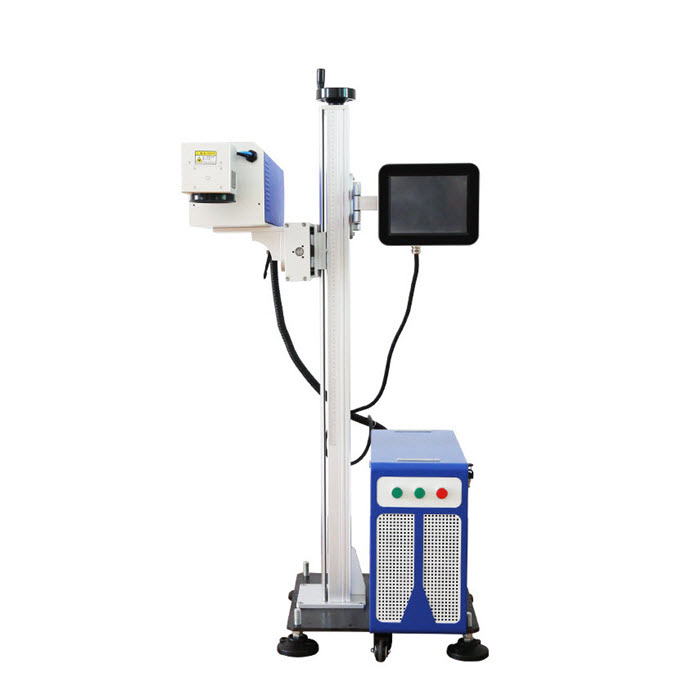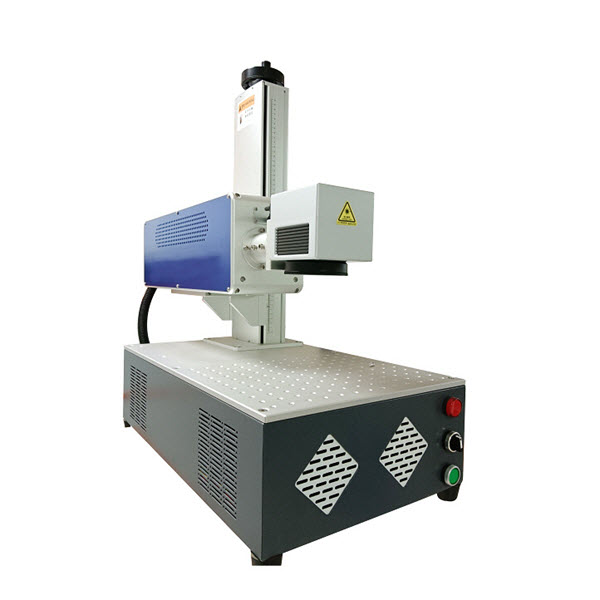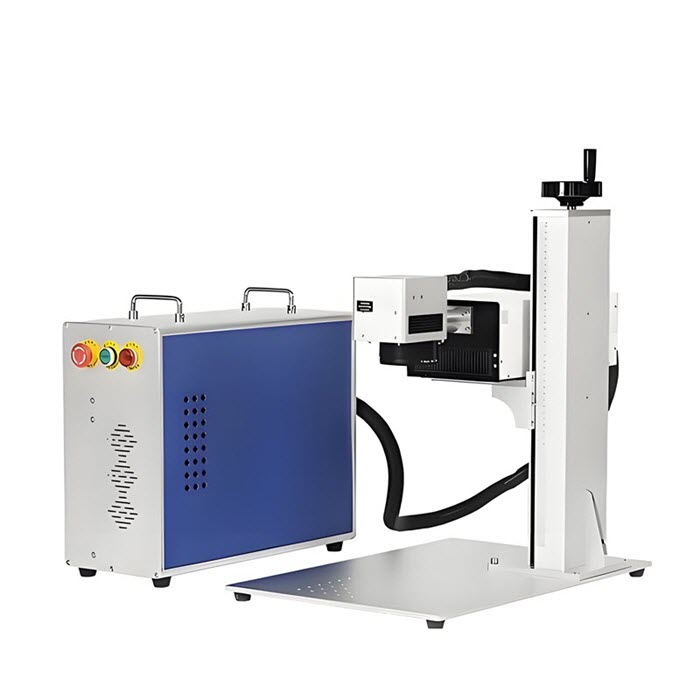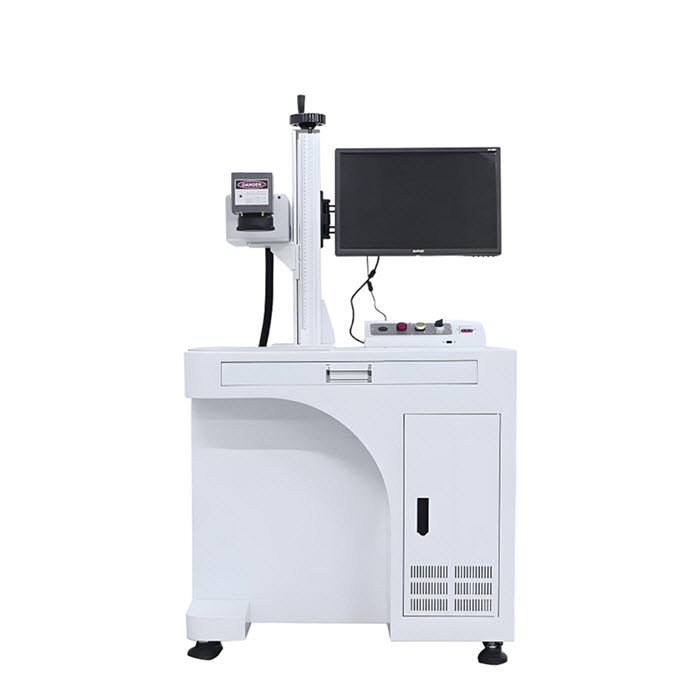
Glass Laser Marking
2025-07-15As a widely used material, glass is applied in modern industrial manufacturing in many fields such as construction, automobiles, electronics, medical treatment and etc. With the increasing demand for product personalization and traceability, many companies have focused on achieving clear, durable, and beautiful markings on the glass surface. Traditional glass marking methods mostly use screen printing or chemical etching, but these methods have problems such as complex processes, poor environmental performance, and insufficient durability. The emergence of glass laser marking machine provides an efficient, environmental-friendly, and accurate solution to this problem.
I. Basic Principles of Glass Laser Marking
Glass laser marking uses a high-energy-density laser beam to irradiate the glass surface. Through the interaction between the laser and the material, the surface of the glass undergoes physical or chemical changes, thereby forming a permanent marking pattern or text. Since glass is a non-metallic inorganic material with a low absorption rate for lasers, it is usually necessary to use a specific type of laser (such as UV laser, CO₂ laser or green laser) for processing, and to cooperate with precise control parameters (such as power, frequency, speed, etc.) to ensure that the marking effect is clear and does not damage the glass structure.
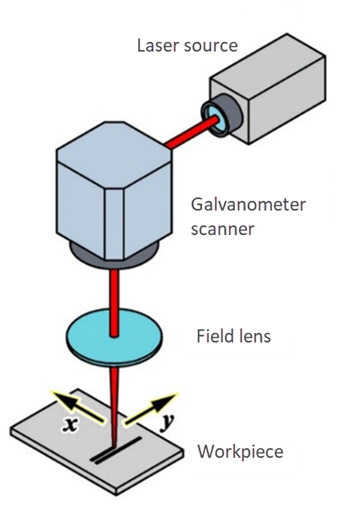
Glass laser marking technology has developed three types of precision control methods, each with its own unique physical mechanism and applicable scenarios:
1. Multiple laser radiation method: Through segmented energy projection, a gentle temperature gradient is formed around the marking area. Taking soda-lime glass and borosilicate glass as examples, this method can effectively inhibit the propagation of secondary cracks and avoid edge fragmentation within a few days after the marking is completed. The principle is that the heat conduction of adjacent areas forms a stress buffer layer, which significantly improves the stability of the marking.
2. Annular crack method: Using the energy Gaussian distribution characteristics, a precise annular crack is generated at the junction of the high temperature area in the center of the spot and the periphery. When the laser heats the glass to the softening point (about 600-800°C), the material expands rapidly to form a convex dome, and after cooling and shrinking, a stable annular structure is left at the junction. This technology is particularly suitable for barcode marking of chemically strengthened glass and float glass, and is widely used on mobile phone covers and car windows.
3. Crack surface method: A large-size spot is used to form a fuzzy density boundary, and a fragment-free crack network is induced by subsequent light pressure. This method has extremely high requirements for the purity of the glass surface, but it performs well in the field of invisible marking of high-end car windshields. The mark needs to be illuminated or touched at a specific angle to appear, and it has both aesthetics and anti-counterfeiting functions.
II. Significant Advantages of Glass Laser Marking
Glass laser marking technology is rapidly replacing traditional processes such as sandblasting and etching, and its outstanding advantages have reconstructed industry standards:
1. Permanent fine marking: the laser focus spot is small, which can achieve fine marking at the micron level, suitable for engraving complex QR codes, logos, serial numbers and other information on glass. The logo formed by laser marking is not easy to wear and scrape off, and has good corrosion resistance and weather resistance, meeting the needs of long-term use. The laser-marked wine bottle anti-counterfeiting code and medical device scale mark can be read for life, and the laser anti-counterfeiting mark of the wine bottle is still as clear as new even after ten years of use.
2. No consumables and environmental-friendly: the entire glass marking process does not require ink, solvents or other chemical reagents, reducing pollutant emissions and conforming to the concept of green manufacturing. Completely get rid of the acid-etching chemicals and sandblasting abrasives required by traditional processes, and reduce hazardous waste treatment. After a home manufacturer adopted laser technology for marking, the dust concentration in the workshop dropped from 15mg/m³ to below 1mg/m³.
3. Ultra-high-speed processing: the laser marking machine has a fast marking speed and can meet the needs of large-scale production. It can be seamlessly connected with the automated production line to achieve fast and continuous marking of glass products, greatly improving production efficiency and reducing labor costs.
4. High flexibility: the glass laser marker is flexible to operate. The marking content, position and parameters can be easily adjusted through computer software. It is suitable for marking glass products of different shapes, sizes and materials, and has strong versatility. Through the galvanometer system and dynamic focal length adjustment, deformation-free marking can be achieved on curved glass bottles (such as perfume bottles and vaccine bottles). High-end models can accurately mark glass containers with a curvature radius of ≥3mm.
5. Non-contact processing: laser marking does not require tools to directly contact the glass surface, avoiding the risk of breakage caused by pressure, especially suitable for thin-walled glass or special-shaped glass products.
This video tells the story of one of our customers using the NITRATEK UV laser marking machine to engrave exquisite dragon totem patterns and Chinese characters on a red wine glass. Equipped with a rotating device, the NITRATEK UV laser marking machine can engrave lifelike patterns on curved glass, with smooth and clear lines and fast engraving speed.
III. Typical Applications of Glass Laser Marking Machines
In daily life and industrial fields, glass products have become the preferred material in many application scenarios due to their transparency, beauty, and durability. Whether it is home decoration or high-tech equipment, glass products are everywhere. In the process of unique identification of these products, glass laser marking technology has become the core point. From daily cups and mirrors to high-end components such as precision instruments such as optical lenses and electronic displays, the accuracy and beauty of glass laser marking not only enhance the added value of the product, but also ensure its traceability and brand recognition. This process has shown irreplaceable importance at all levels. At present, glass laser marking has been widely used in many industries:
1. Electronic products: laser marker is used for LOGO, model and identification code marking of components such as mobile phone cover glass, camera lenses, and display screen protection glass.
2. Medical equipment: laser marks batch number, expiration date and other information on medical glassware, syringe tubes, and microscope slides to ensure hygiene, safety and traceability.
3. Wine and cosmetic packaging: engrave brand names, anti-counterfeiting codes, barcodes, etc. on the surface of glass bottles to improve product quality and anti-counterfeiting capabilities, such as wine glasses, perfume bottles, red wine bottles, cosmetic glass bottles, etc.
4. Building and decorative glass: laser marking technology is also used for functional markings such as numbers and installation direction indicators on door and window glass and partition glass.
5. Automobile industry: laser marking machines can also be used to permanently mark information such as security logos and VIN codes on car window glass and dashboard glass. The invisible VIN code of automobile glass is marked by the cracked surface method, which is difficult for thieves to detect, and the marking content can only be read by professional equipment.
6. Art and gift industry: it can also be used for personalized engraving of customized glass trophies, souvenirs, photo frames and other products.
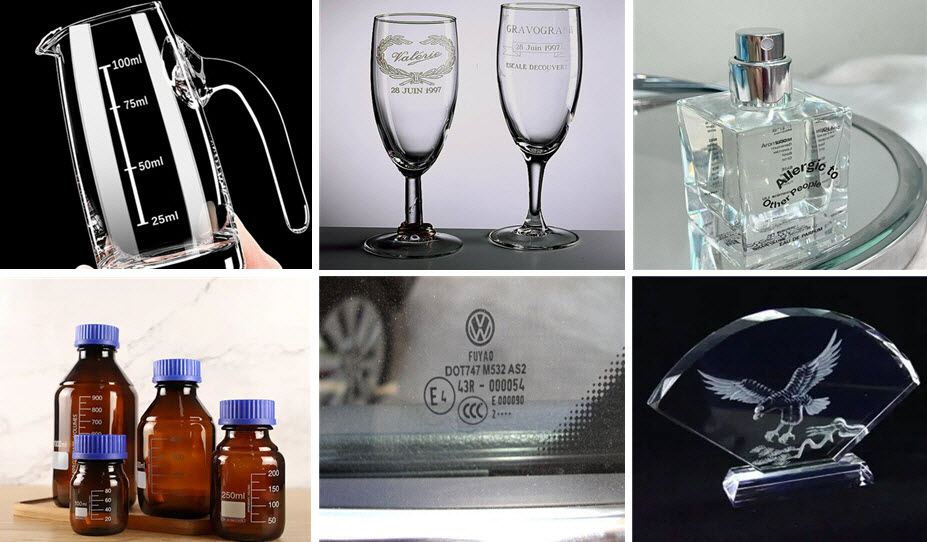
IV. Difficulties in Laser Marking of Glass Products
Glass products have significant advantages in terms of aesthetics and durability, but marking on their surfaces faces a series of unique challenges. These difficulties not only affect the quality and efficiency of marking, but also require the operator to have rich experience in laser glass marking. The following are several common difficulties in the process of marking glass products:
1. Material brittleness and thermal sensitivity
Glass is a brittle material with high hardness but poor impact resistance. Traditional marking methods such as mechanical scratching or chemical etching may cause glass to break or produce microcracks, thereby affecting the integrity and service life of the product. In addition, glass is extremely sensitive to temperature changes, and improper heating treatment may cause material deformation or stress concentration areas, further increasing the risk of breakage.
Different types of glass, such as ordinary glass, tempered glass and special optical glass, have significant differences in chemical composition and physical properties. These differences directly affect the absorption, reflection and transmission characteristics of glass to lasers, so that the same marking process and parameters may produce completely different effects on different glass materials. For example, some special optical glasses have low absorption rates for lasers of certain wavelengths, which makes it difficult to form clear and durable marks on their surfaces; tempered glass is more prone to cracking or breakage during laser marking due to its complex internal stress distribution. Therefore, it is particularly important to develop personalized marking solutions for the unique properties of each glass material, which also increases the difficulty and technical requirements of laser marking. In order to ensure the best marking effect, key parameters such as laser wavelength, power, and marking speed must be adjusted according to the specific glass type.
2. Low laser absorption rate
Glass has low absorption rate for most wavelengths of lasers, especially for commonly used infrared lasers (such as CO₂ lasers). This means that higher energy density is required to form effective marks on the glass surface, but this may cause overheating problems, damage the material structure or cause uneven marking effects. Therefore, it is crucial to choose the right laser type (such as UV laser or green laser) and its parameter settings.
3. Requirements for precision and clarity
Many application scenarios require extremely high-precision marking on glass surfaces, such as tiny QR codes on display screen protection glass in electronic products or delicate brand logos on high-end wine bottles. This not only tests the resolution and stability of the marking equipment, but also requires precise control of the energy distribution of the laser to ensure that the marking lines are clear, the edges are smooth and there are no burrs.
4. Environmental and safety considerations
Traditional glass marking methods often involve the use of chemical reagents or inks, which may have negative effects on human health and the environment. In contrast, laser glass marking is considered a more environmentally friendly option, but it is still necessary to pay attention to protective measures during operation to avoid potential damage to human eyes and skin.
5. Processing of complex shapes and special-shaped parts
Not all glass products are flat. Many products have complex three-dimensional structures or curved designs, such as car windows, optical lenses, etc. In this case, how to ensure that the laser beam can evenly cover the entire marking area and maintain consistent marking quality at different angles is a technical problem. Traditional flat marking equipment cannot fully meet the marking needs of curved glass because they lack the ability to process non-planar surfaces. In order to achieve high-quality marking on curved glass, it is usually necessary to equip a special rotating or swinging device to perform marking operations from multiple angles. In addition, during the marking process, it is crucial to accurately control the distance and angle between the laser beam and the glass surface. Any deviation may cause deformation, blurring or other quality problems in the mark. Therefore, ensuring the optimal distance and angle between the laser beam and the curved glass surface is a key factor in obtaining clear and accurate marking.
Although laser marking of glass products has many advantages, it also faces many challenges in terms of material properties, thermal management, high precision requirements, complex shape processing, and cost-effectiveness. With the advancement of laser technology and the application of new materials, these problems are gradually being solved, and glass laser marking technology is expected to become more mature and popular in the future.
From daily bottles and cans to aerospace portholes, glass laser marking technology is reshaping the precision boundaries of modern manufacturing. With the breakthrough in the integration of picosecond lasers and AI control systems, future glass products will be given a more precise and intelligent unique identification method. With its unique process advantages and a wide range of application scenarios, glass laser marking technology has become an indispensable and important tool in modern manufacturing. It not only increases the added value of glass products, but also provides strong support for enterprises to realize information management and product quality tracking. With the continuous development of technology, glass laser marking machines will demonstrate their value in more industries and help the manufacturing industry move towards a higher level of intelligence and refinement.

